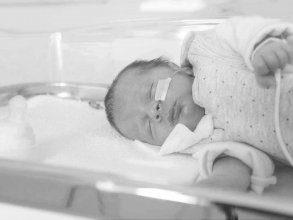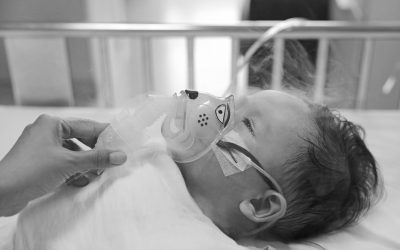In recent years, PICC-ports have emerged as a safe, effective and comfortable option for the administration of medications to cancer patients. Another advantage of these devices over thoracic ports is that they are easier to place and result in fewer complications.
To learn more about these vascular accesses, which improve the quality of life of patients and provide multiple advantages in terms of cost-effectiveness, we spoke with Marta Rubio de las Cuevas. Marta is a nurse in the Vascular-Interventional Radiology Department at the Marqués de Valdecilla University Hospital in Santander, which has been a pioneer in Spain in the training of multidisciplinary teams for the insertion of PICCs for 43 years.
The team for which she is responsible for was the first in Spain to allow nursing staff to place brachial ports first and then, PICC-ports. Since December 2012 they have placed 530 of these systems. Over this period, her team has not encountered any infections associated with the placement of the device and they have only observed one complication of migration to the ventricle at 24 hours. This incidence helped them investigate the relationship between arm movement and the possibility of the catheter migrating, observing that abduction and adduction movements resulted in migration of up to 3 centimetres in 45% of cases.
During her professional life, Marta has continued learning on an almost daily basis. The experience acquired working with cardiovascular surgeons in the implantation of endoprostheses in patients with abdominal aortic aneurysms helped her take the step of starting to insert brachial ports (in the forearm) and, subsequently, PICC-ports (which are located on the inside of the arm) when she proposed to take charge of this procedure.
After training with Dr. Fermín Urtasun, head of Interventional Radiology at the Hospital de Navarra, Marta continued with self-taught training courses, literature searches and personal reflection on these processes, which led her to form a vascular nursing team that performs procedures that are carried out by doctors in other hospitals.
Placing this responsibility in the hands of nurses has allowed processes to be streamlined, and waiting lists that previously delayed the implantation of a port from the time it was prescribed to be eliminated.
Marta explained the way in which her interdisciplinary team works. Vascular radiology nurses place the devices whereas day hospital nurses administer the subsequent care and maintenance treatments. When required, the team is assisted by doctors such as vascular radiologists, surgeons, or the head of the medical day hospital. This interdisciplinary approach, with a clear protocolization and assignment of roles, reduces variability during execution of the process and limits complications. Each of the people involved, irrespective of their training, enriches a team in which each member contributes nuances and values, reinforcing their union and mutual support.
In contrast to what might have been imagined, taking this project forward was a simple and smooth process since the necessary resources, both material and human, were available in advance. For instance, they had at their disposal an operating theatre and nurses who were trained in ultrasound-guided puncture and navigation to the right atrium. The confidence of Dr. Miera (head of the day unit) and Dr. Bustamante (head of the vascular radiology unit), together with the support shown by Zulema Gancedo (director of nursing), did the rest, aided by nurses’ training in the implantation of PICC-ports.
In addition to the aesthetic advantages for the patient, placement of PICC-ports is a simpler procedure than the one for a thoracic port as no large vessel that could produce a hematoma is punctured and there is no risk of a pleural puncture pneumothorax. The tip is always lodged in the right atrium, with no risk of it lodging in the ventricle. Marta considers that the risk of the port rotating is also lower when it is lodged in the arm.
The economic advantages are also evident since the procedure is performed by a nurse and not a doctor and does not require sedation or an operating theatre.
The implantation time is also reduced and is currently around 45 minutes. The advantages of a PICC-port are so numerous that the Hospital Marqués de Valdecilla has practically stopped using thoracic ports. In fact, last year, 88 PICC-ports were placed at this hospital compared to only eight thoracic ports.
These devices are indicated for medium- and long-term treatments (up to 5 years and even longer) and allow an active lifestyle, including swimming in a pool or in the sea. It also facilitates the treatment of people who live far from hospitals and cannot go there every week. Moreover, patients who wear one avoid constant venipunctures that can be quite damaging to one’s venous capital.
A PICC-port must allow the administration of any type of medication, the extraction of blood samples, and the introduction of contrast with an injector pump at 5 ml / s to perform a scan or MRI. Titanium ports with a polyurethane catheter and a silicone membrane are typically used. The port must be light, have a low profile and a catheter with a small enough diameter so that it does not damage the vein, thus avoiding thrombosis problems. Puncture with a Huber needle is performed in the same way as for thoracic ports.
Marta places the PICC-port using ultrasound-guided puncture, and subsequently performs a fluoroscopy or radioscopy to guide her during navigation to the right atrium. Soon, her team will begin using intracavitary ECG (implementation has been delayed by the health crisis of COVID-19) as a method for locating the tip of PICCs and PICC-ports. It will avoid radiating the patient which will also protect healthcare professionals’ own health.
The Marqués de Valdecilla Hospital Nursing team provides comprehensive care to patients who require a PICC-port, following a protocol that includes a prior physical and emotional assessment, with detailed information and recommendations. This human bond that they acquire with the patient is essential as it helps them totally trust the nurses and lays the foundation for a successful procedure.
In Marta’s opinion, the key for patients to trust a nursing team to carry out procedures such as the placement of PICC-ports lies in the acquisition of theoretical-practical knowledge tutored by experienced professionals.
Nursing teams from six hospitals in Spain (both ETIs and vascular radiology) have passed through the Marqués de Valdecilla hospital and have shared the experience of carrying out the technique for placement of the PICC-port over a few days. Marta recognizes that enrichment is mutual and that she also acquires knowledge from colleagues from other hospitals who come to Valdecilla for training. It happened with the intradermal and subcutaneous suture that she has learned from Iván Sánchez, a nurse at the Hospital San Pablo in Barcelona, or with the use of cyanoacrylate discovered by Paloma Ruiz, a nurse at the San Carlos clinical hospital in Madrid and an expert in vascular access.
Marta believes that it is essential that the nurse who implants a PICC-port is also the one who removes it, either because of infection, bedsores, or the end of treatment. In any case, do not hesitate to seek the help of other professionals, such as the cardiovascular surgeon or the plastic surgeon.
If you liked this article, you may also like:



